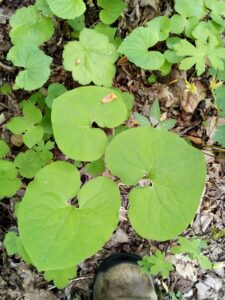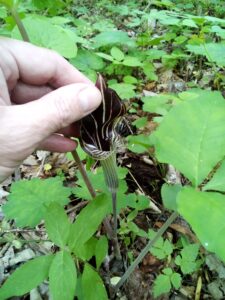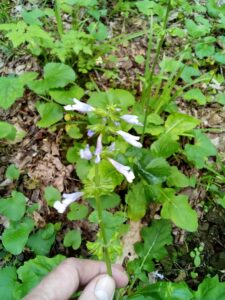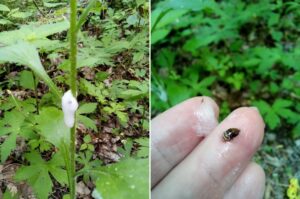We offered an optional learning experience for our Grow Appalachia families in early May: wild edibles walks. On Thursday, May 11, the walks were offered at three different locations, under the assumption that we’d encounter different plants at each site. The sites didn’t disappoint, and the group learned about hemlock, Solomon’s seal, violets, redbud, sassafras (which is no longer recommended as an edible, due to carcinogenic properties), pokeweed, Indian cucumber, sourwood, wood sorrel, autumn olive, multiflora rose, stinging nettle, jewelweed, yellow birch, wild ginger and lots more.



And just because we observed it, we went into a little lesson on “snake spit,” which is what we always called the globs of spittle we’d see on plant stems when I was a kid. I showed the group that, if you dig into that, there’s a little insect inside — the spittle bug. Even though spittle bugs feed on the plant juices, there’s rarely a need to manage them.




Leave A Comment